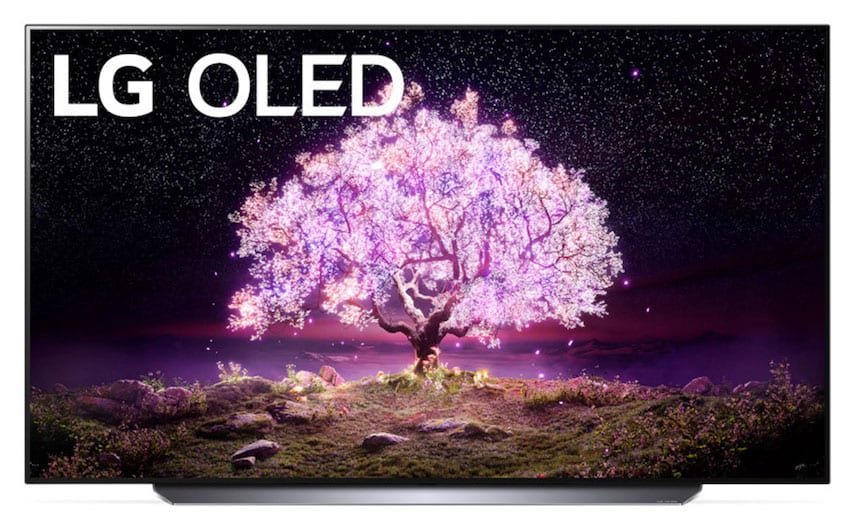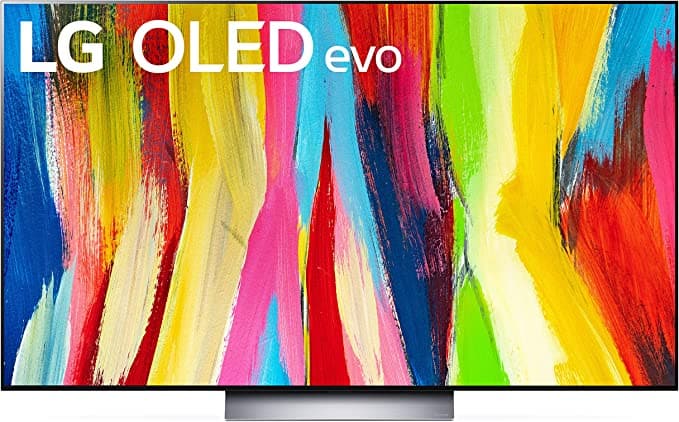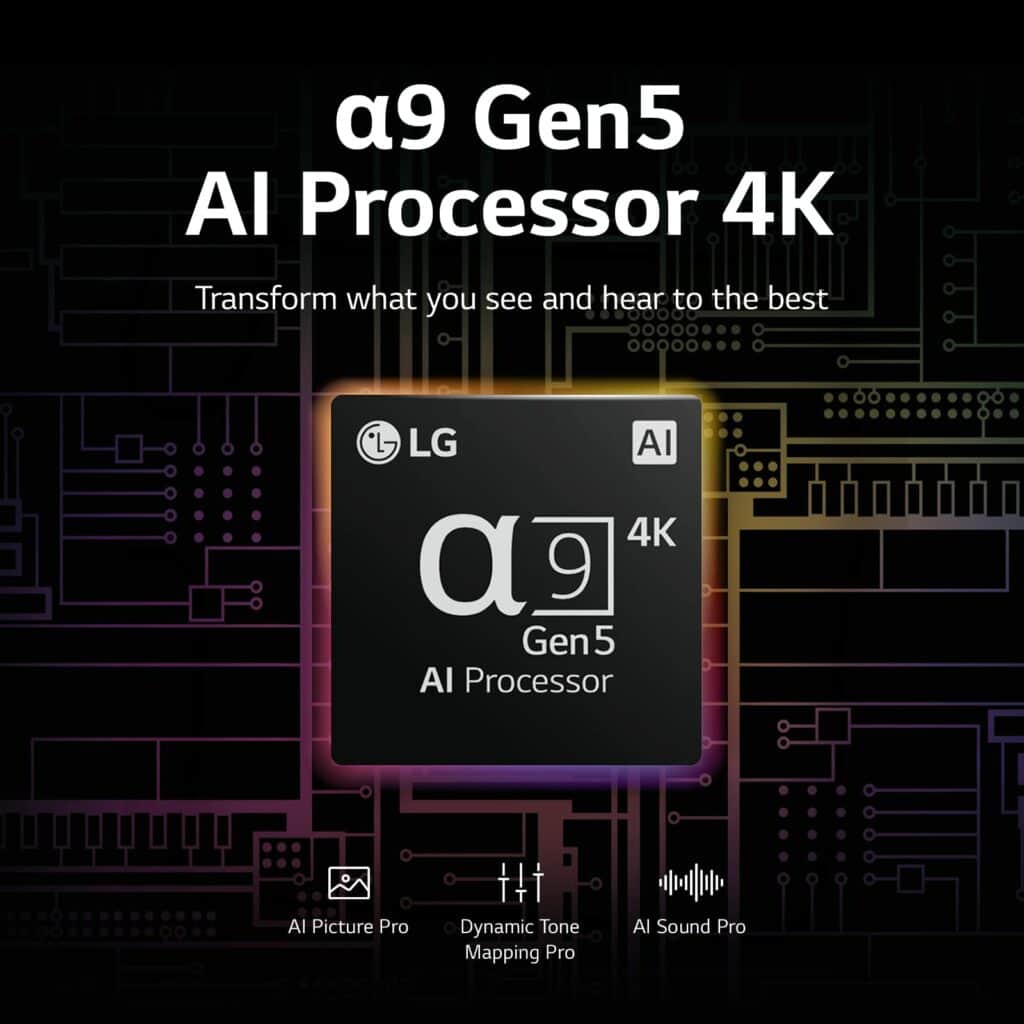When buying a new TV, there are so many choices. Should you buy an LED, OLED, or QLED? Which manufacturer? VA (Vertical Alignment) or IPS (In-Plane Switching)? So many questions and really no right or wrong answer.
In this article, we’ll take a look at LG C1 vs C2, two similar OLEDs from this popular TV manufacturer and see which TV is a better choice for your money.
LG C1 and c2 overview
The LG C1 was released in January 2021 and is available in 45, 55, 65, 77 and 83-inch variations. It boasts a near-infinite contrast ratio, webOS 6.0 smart TV, 120Hz refresh rate and 4K resolution.
Its successor, the LG C2, came out in 2022, and with it, LG pretty much upgraded everything at least a little, plus added some new features. Here’s a table comparing the main specs:
| Features | LG C1 | LG C2 |
|---|---|---|
| Screen Sizes (in inches) | 45, 55, 65, 77 and 83 | 42, 45, 55, 65, 77 and 83 |
| Screen Panel | OLED | OLED |
| Processor | a9 Gen 4 AI 4K | a9 Gen 5 AI 4K |
| Operating System | webOS 6.0 Smart TV | webOS 22 |
| Refresh Rate | 120Hz | 120Hz |
| Variable Refresh | Yes | Yes |
| Resolution | 3840×2160 | 3840×2160 |
| Contrast Ratio | Infinite :1 | Infinite :1 |
| HDMI Ports | 4 (HDMI 2.1) | 4 (HDMI 2.1) |
| USB Ports | 3 (USB 2.0) | 3 (USB 2.0) |
| WiFi and Bluetooth | Yes | Yes |
| Speakers | 40 Watts | 40 Watts |
| Price | Check Price on Amazon | Check Price on Amazon |
LG C1

Pros:
- Wide viewing angles
- Near-infinite contrast ratio
- Excellent response times
- Great blacks with zero visible blooming
- Top-notch reflection handling
Cons:
- Potential burn-in
- Some colors can be off
LG C2

Pros:
- Wide viewing angles
- Near-infinite contrast ratio
- Perfect blacks
- Top-notch reflection handling
- Excellent response times
Cons:
- Not as slim as some other LG models
- Possible uniformity issues at certain angles
- ABL (Auto Brightness Limiter) can be distracting
Features face to face
Panel technology
Both models here use OLED (organic light-emitting diode) panels. This means that you can enjoy watching them from wide viewing angles, and they also have excellent response times.
Winner: Draw
Image processor

The LG C1 uses the α9 Gen 4 AI 4K processor, which offers deep-learning technologies and excellent content upscaling to provide superior image and color accuracy.
On the other hand, the LG C2 has the next generation α9 Gen 5 AI Processor 4K under the hood. This CPU boasts even better AI audio upscaling and a few more improvements.
Winner: LG C2
Motion technology
When it comes to motion technologies, both models are almost perfect 10s. The response times are excellent at 2.3ms each, so if you’re looking for a TV to watch sports on or use as a PC monitor, you can’t go wrong with either of these.
The two models also support variable refresh rate (VRR) and have a 120Hz refresh rate and optional BFI (Black Frame Insertion).
The only downside is there’s some stutter in long panning shots on both TVs.
Winner: Draw
Picture Quality
Contrast Ratio / Black Level
Again, LG did an excellent job with both models in terms of picture quality.
Both LG C1 and C2 have an inf: 1 contrast ratio. This means they can reach black levels of 0 nits and technically an infinite difference between brights and darks on the screen.
Winner: Draw
Local Dimming
Since OLED TVs don’t use a backlight, neither of these two models feature local dimming. However, thanks to the infinite contrast ratio, this is really not an issue.
Winner: Draw
Peak Brightness
This is the first category where we can see some significant differences between LG C1 vs C2.
The LG C1 is mostly okay when it comes to peak brightness in both SDR (302 nits) and HDR (639 nits) content. It will handle itself well in scenes with relatively normal brightness, but very bright content can cause it some trouble.
In comparison, LG C2 handles brightness a little better as its SDR content reaches peak brightness at 422 nits and HDR at 850 nits. While promising, this is still not as good as LG’s G2 model with 1170 nits (here’s our comparison of LG C2 vs G2 4K TVs).
Winner: LG C2
Color
Both C1 and C2 have a wide color gamut (the number of colors a TV can display) and some very good color volume as well.
The LG C1 covers almost an entire DCI P3 color space (96.33% DCI P3 xy and 98.83% DCI P3 uv). The only problem is that some colors can be off the mark as it doesn’t map them perfectly.
It also has a solid color volume (the amount of color it can display through the luminance stage), although its slightly lower peak brightness limits it in this regard. Still, the high contrast ratio ensures that it produces dark, saturated colors well.
The LG C2 is slightly better when it comes to color gamut and covers an even greater range of DCI P3 (98.01% DCI P3 xy and 99.36% DCI P3 uv). Like with the C1 model, the tone mapping isn’t the best, and this especially shows with greens.
As for color volume, it’s fairly good, and thanks to the infinite contrast ratio, the dark saturated colors are displayed exceptionally well.
Winner: Draw
Viewing Angles
You can expect excellent viewing angles with both C1 and C2 and these two TVs will be the perfect choice if you want to watch a sports game or enjoy a movie night with a bunch of friends.
This is one of the biggest advantages that OLED panels have over VAs.
The differences here are minuscule really, and pretty much nitpicking, but you’ll only get to see some color washout begin at 57 degrees for C1 and 65 degrees for C2.
Winner: Draw
Reflections / Anti-Glare
If you have a choice, don’t place your TV near the window, but sometimes that’s the only place in the room and TV manufacturers know this.
Thus, you want a TV with good reflection handling and both LG C1 and C2 nail this category superbly. Both TVs have a glossy screen finish.
Thanks to the glossy finish and anti-reflective coating, direct reflections are almost non-existent on LG C1. However, as some content may have lower brightness, it may not be perfectly visible in extremely bright rooms. Despite this, it still gets a higher rating from us compared to Sony A80J, as you can see in our LG C1 vs Sony A80J comparison review.
Similarly, LG C2 also handles reflections perfectly. It also uses a glossy screen finish to reduce direct reflections to almost none. The only issue is that the anti-reflective coating can add a purple tint to the screen, however, this won’t affect image quality.
Winner: Draw
Sound Quality
If you’re looking for a well-balanced sound profile — both LG C1 and C2 both are pretty impressive in this regard.
There’s not a lot of difference here as both have 2.2 channel 40 Watt speakers, which is fairly good at moderate volumes, but you’ll hear some compression and artifacts if you crank the volume to max and like most TVs, these two also can’t produce much bass.
Winner: Draw
Smart TV Platform (Operating System)
The LG C1 supports webOS 6.0, while LG C2 uses the newer webOS 22. These two operating systems are pretty similar, but the latest OS features a few new bells and whistles. You get features like Ambient Mode, Room-to-Room Share (that lets TVs within a home share content), built-in apps like 1M HomeDance and LIVENow.
Another difference is that with webOS 22, you can configure up to six user profiles based on browsing templates.
Winner: LG C2
Connectivity
Inputs
If you’re looking to connect your TV monitor to a PC or a gaming console, the first thing you want to look at is how many ports it has and which ports.
Both LG C1 and C2 have four HDMI 2.1 ports and three USB 2.0 ports, plus Ethernet, Audio Jack, and Optical Audio Out ports. One major difference is that C2 lacks the 3.5mm analog audio out jack, meaning you won’t be able to connect it to external speakers.
Winner: Draw
Voice Assistant
Both LG C1 and C2 come with the integrated Google Assistant and Amazon Alexa voice assistants and support the LG ThinQ AI which only gets better the more you use it, thanks to deep learning.
Winner: Draw
Wireless Technologies
When it comes to wireless tech, LG C1 and C2 both support 2.4GHz and 5GHz WiFi connections, as well as Bluetooth 5.0.
Winner: Draw
Conclusion
Other than the newer image processor and the operating system, there’s not a lot of difference between LG C1 vs C2. Price-wise, these TVs are for someone with a slightly deeper pocket as the cheapest 48-inch LG C1 or C2 OLED TV will cost you about $1000 and the larger ones (77 and 83 inches) are around $2-3 grand.
Should you buy C1 or C2? The C2 is slightly better, but not by much. Is it worth the extra cash? It’s really up to you.